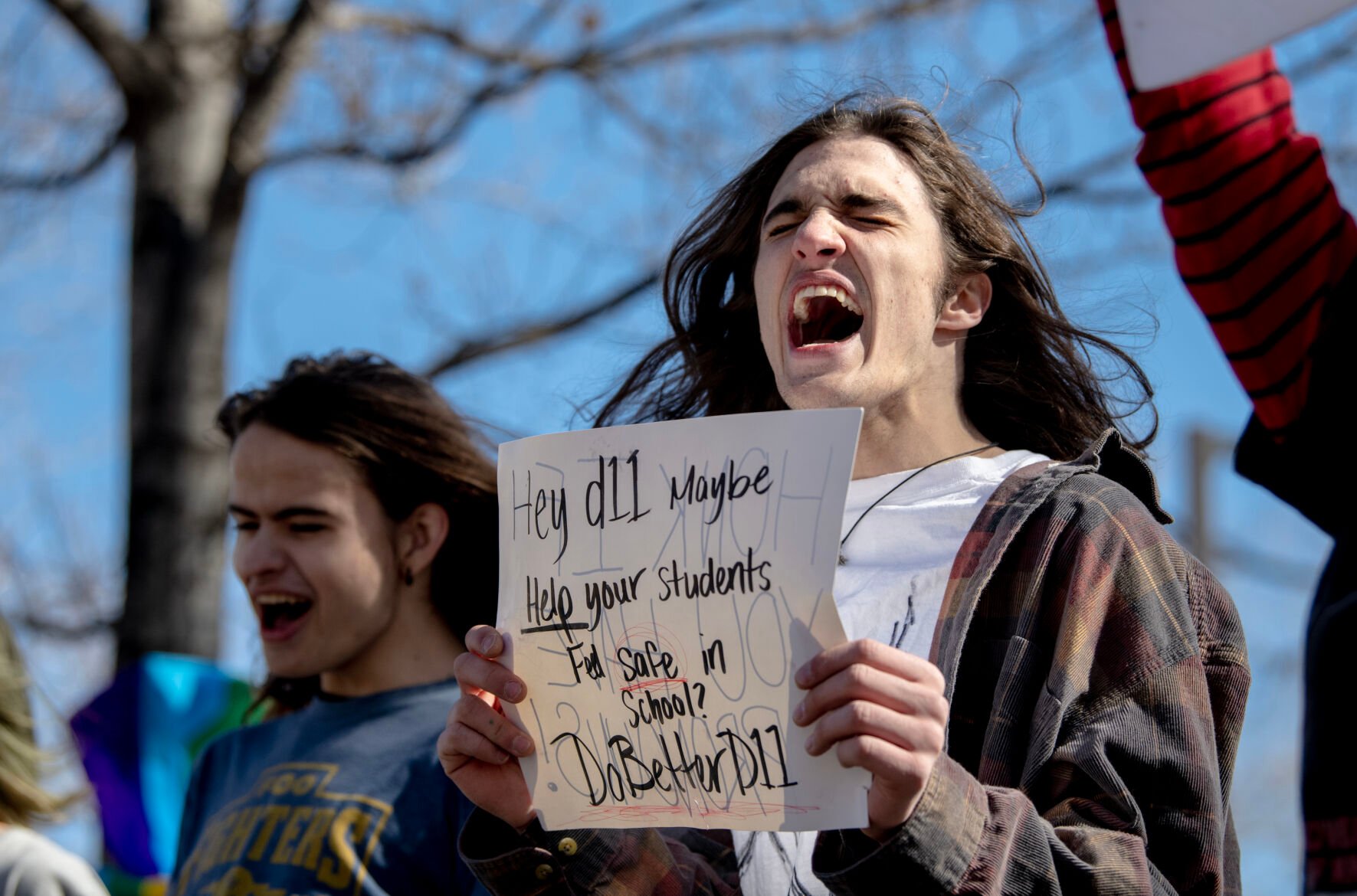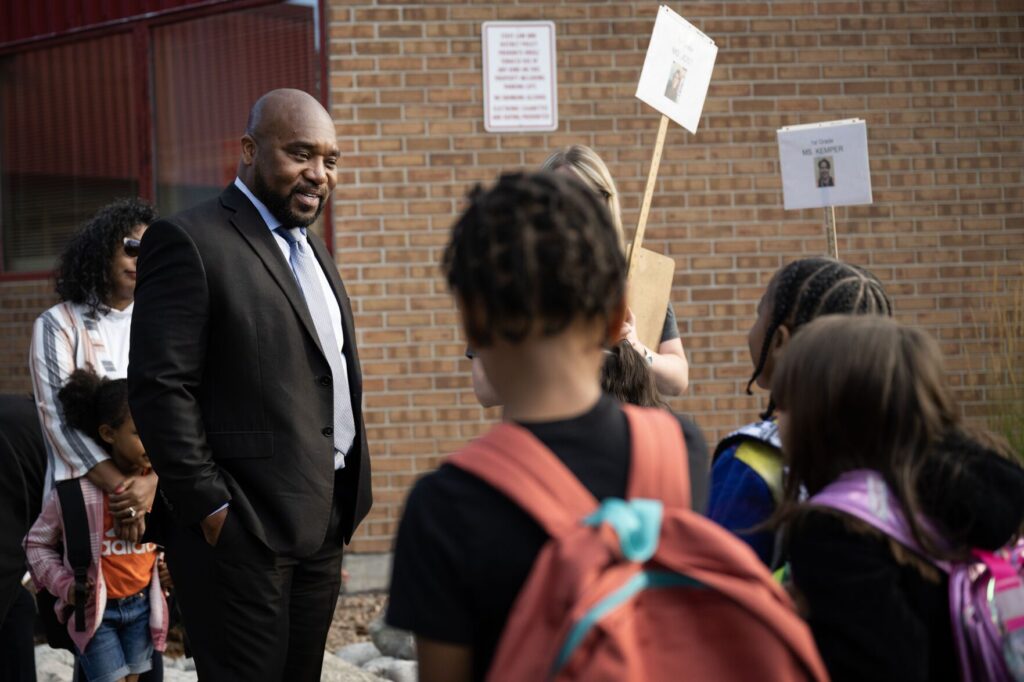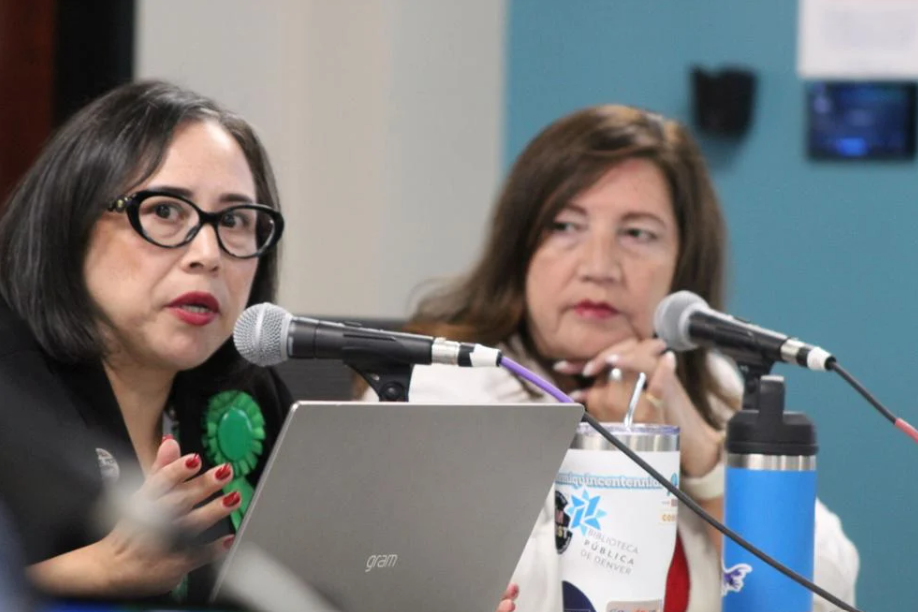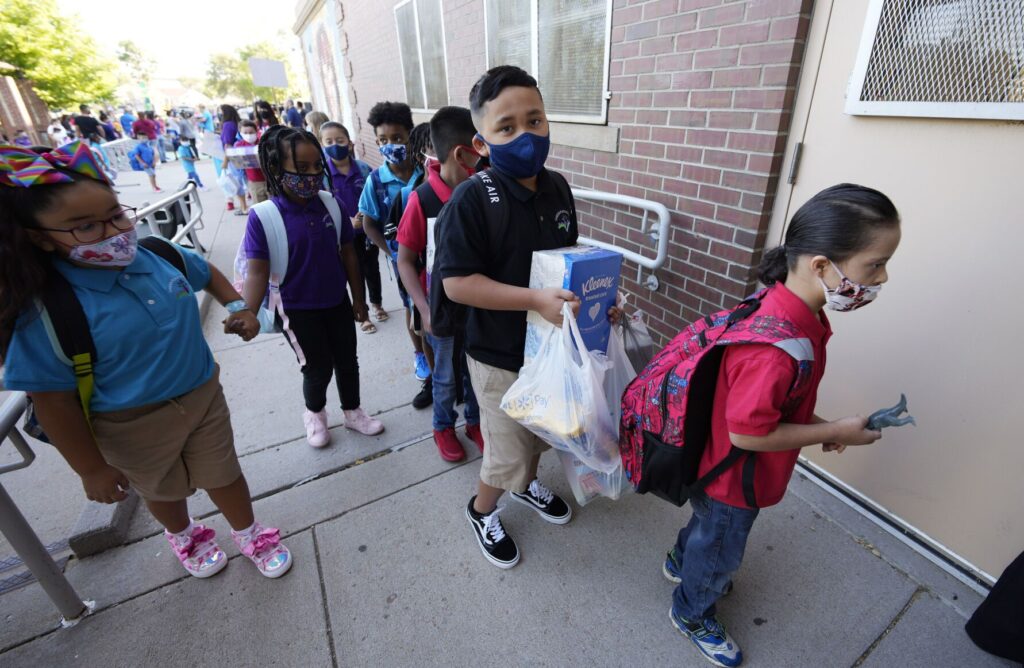In Colorado Springs school district divided over pronouns, staff conduct policy will look different than expected
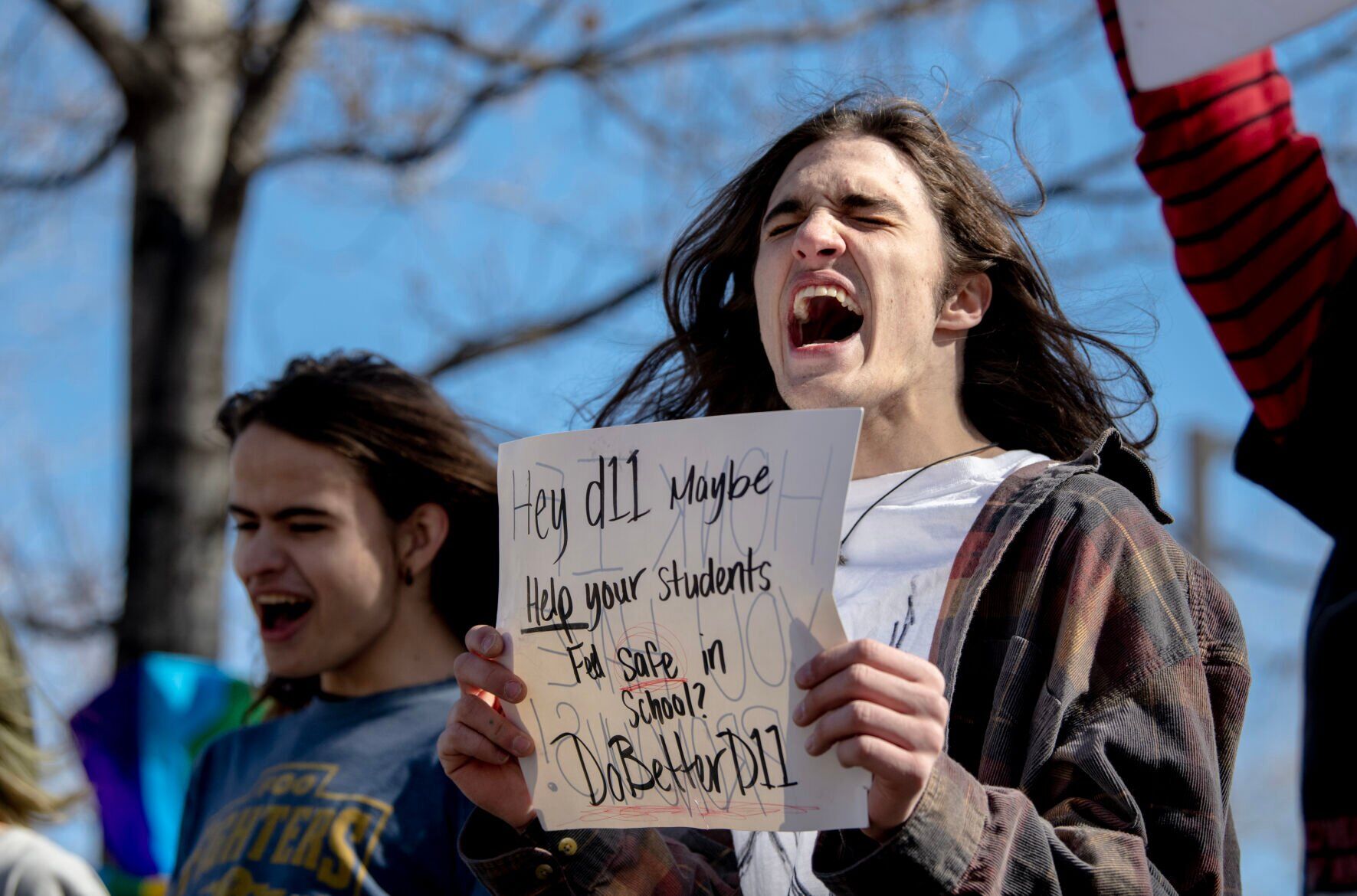
In February, the Colorado Springs School District 11 board proposed staff should be prohibited from asking students their preferred pronouns, a divisive concept that for more than a month has dominated the public’s attention.
Board Vice President Jason Jorgenson, who introduced the discussion, said pronouns serve no educational value and can make cisgender students – those whose pronouns align with their gender at birth – feel uncomfortable.
Under the language proposed by the board, students would be free to share their pronouns on their own terms, but teachers would not be allowed to ask or prompt them to do so.
Four of seven board members expressed support for the language. An official vote is expected this month after a policy subcommittee consisting of staff, parents and community members discusses the recommendation and drafts a policy for the board’s consideration.
But the language will likely be far less detailed than the board’s proposal, a district spokesperson said. Specifics on how the policy will be implemented are ultimately decided by administration, not the school board.
Policy won’t dictate pronoun questions
Students were the first to push D-11 to create the new policy governing staff conduct, district spokesperson Devra Ashby said. If there are rules for student conduct, they reasoned, so too should there be rules for staff. Such a policy already exists at other local school districts.
In response, the board requested a subcommittee to draft a policy outlining appropriate student-teacher relationships in accordance with the Colorado Association of School Boards’ guidelines.
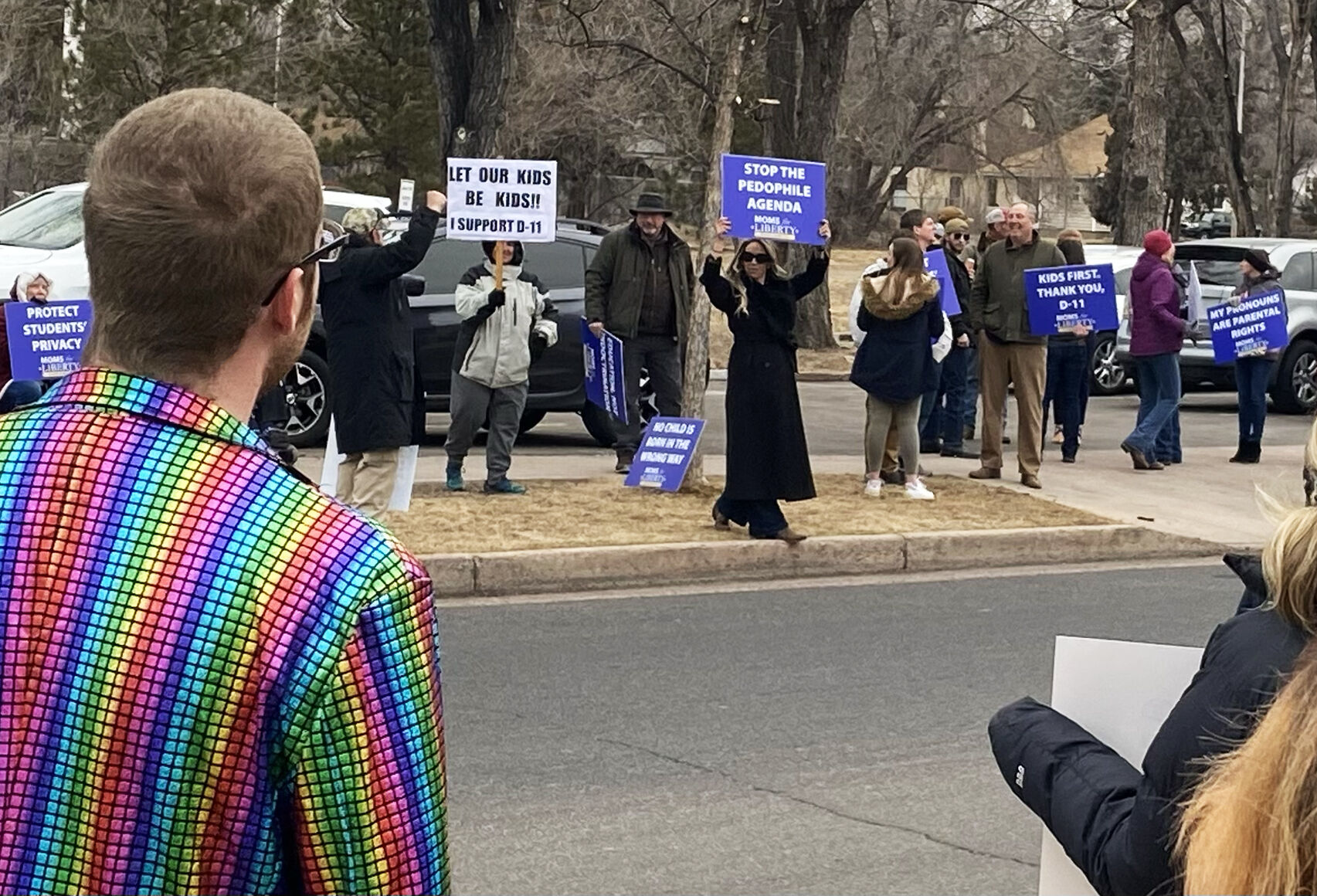
The D-11 board’s subsequent language discussion, which launched the community into a series of heated back-and-forths, did not pertain to policy, however. It pertained to regulation, an important if seemingly obscure distinction.
Whereas the school board votes on policy that provides overarching guidance, only administrative staff and the superintendent can set regulation. Regulation details how the district will implement policy in its work in a more specific manner.
“The superintendent has been present for all of the community input and involvement at board meetings, so he’s heard from all of the parties who have chosen to speak and email and make their voices heard,” Ashby said. “I know that he would take that into consideration when helping to draft the regulation.”
The policy will look quite different from what has been publicly discussed, likely stating more broadly that staff members must refrain from proselytizing and imposing their views in the classroom, Ashby said.
“It’s not gonna be specifically saying, ‘Staff will be prohibited from asking students their pronouns,'” Ashby said. “That would be too tight of language to put into a policy.”
A district divided
Palmer High School was the first place freshman Michelangelo Krewson said he could be open about who he was as a transgender boy.
The setting was liberating, safe even, especially on the heels of a middle school where being misgendered was not uncommon, Krewson said. It’s an uncomfortable experience he and other students know all too well.

Palmer was different. There, teachers care to ask his pronouns, he said. They care to get them right.
“We don’t get treated like we’re ‘learn bots,'” Krewson said. He worries that could change under the new staff conduct policy.
The board has remained quiet on the topic since its introduction last month, but board President Parth Melpakam said important discussions are happening behind the scenes. The subcommittee is actively working to address concerns from both sides of the aisle such as the safety and well-being of every student, parental voice and student privacy.
“All students have intrinsic worth and dignity and should be continuously reminded to treat others with kindness and respect,” Melpakam said in a statement to The Gazette. “This will help us attain real student equity, by making our schools safe zones, where our students are assured physical and intellectual security to pursue excellence.”
Tending to each need is a delicate balance when those needs appear diametrically opposed.
Supporters say the proposal shields children from distractions and gender ideology. Critics say it is anti-LGBTQ+ and dangerous. Public comment at two subsequent board meetings centered on the issue, and students and community members staged two protests outside the district office.
Violet Coddington, a nonbinary student at Palmer High School, said the proposal is an attempt at silencing transgender voices and erasing them from the school system.
“It’s like being called the wrong name when I’m not called the right pronoun,” Coddington said at a March 8 protest. “Not being affirmed by my gender, it makes me feel really negative. And school’s already not necessarily a super wonderful place, so I’m trying to make the best of it by defending my rights.”
Student protesters such as Coddington say asking pronouns is a simple action with significant implications.
“The discomfort for people who don’t think about it at all is much less intense than the repeated discomfort of that person who’s always the only one thinking about gender all the time,” said Page Regan, an education researcher who is transgender and a former high school and elementary school teacher now pursuing a doctoral degree at the University of Colorado Boulder.
According to a 2022 national survey by LGBTQ+ youth nonprofit the Trevor Project, 45% of LGBTQ+ young people seriously considered attempting suicide in the past year. That percentage includes more than half of transgender and nonbinary youth.
A study by the Journal of Adolescent Health further shows that asking young people their pronouns and calling them by their chosen name can reduce their risk of suicide by 56%.
Colorado colleges recommended to use computer-based entrance exam beginning 2024
But asking pronouns can also have an adverse effect on other students who do not identify as LGBTQ+, according to Joseph Boyle, a retired Monroe Elementary teacher of 14 years and vocal D-11 resident who regularly speaks at school board meetings. The very act is a request that students affirm a gender ideology they may or may not even ascribe to, he said, and the claim that nonbinary and transgender students will have no way to communicate their identity under the proposed regulation is false.
Perhaps a more appropriate way to open the door for students, he said, is asking more generally, “How would you like me to address you?”
“That is a question that gets a staff member the information that they need without implicitly communicating that it is the norm that no student is discernible by their biological sex. That implication or explicit statement is the expression of an ideological point of view to a captive audience of young people, and that’s not right.”
Board member Al Loma voiced support for Jorgenson’s proposal at the February meeting, saying talk of pronouns imposes ideals and beliefs into children’s still-developing minds. Schools should not be catering to what he said represents “less than 1%” of people while offending others.
“I’m offended. I mean, I’m kind of old-fashioned. I know a boy when I see one, and I know a girl when I see one,” Loma said. “My offense doesn’t matter apparently because, you know, we don’t matter. You know, Christians don’t matter.”
Loma, a pastor, compared a teacher asking students their pronouns to him asking students if they believe in Jesus, neither of which would be appropriate, he said. Conversations on pronouns are instead best left to parents.
Jorgenson and Loma did not respond to The Gazette’s request for comment.
“When anything is new for someone, it might seem like an attack or uncomfortable, and that’s so valid,” said Regan, the researcher and former teacher. “It kind of comes back to shifting how we think about that timeless Golden Rule: Treat others how you’d like to be treated. Pronouns are about treating others how they’d like to be treated.”
Affirming spaces
Less than 1 in 3 transgender and nonbinary youth found their home to be gender-affirming and about half found their school to be affirming, The Trevor Project’s national survey found. The nonprofit’s research consistently finds LGBTQ+ young people report lower rates of suicide attempts when they have access to LGBTQ+-affirming spaces.
For some, a school is the only safe space available, said Liss Smith, a spokesperson for Inside Out Youth. The Colorado Springs-based nonprofit supports LGBTQ+ teens and young adults.
“Sometimes it’s fine because the parents know. Sometimes school is the first place a person comes out, and the parents don’t know yet, and depending how the parents react, it could genuinely be dangerous for young people,” Smith said. “(By discussing pronouns,) you’re respecting the child’s autonomy and their ability to come out in a place that’s comfortable for them and the environment that’s comfortable for them.”
The solution is not so simple for district grandparent Sheryl Sayler, however, who said her freshman granddaughter physically cringed at the thought of being asked her pronouns by a teacher.
When teachers ask students their pronouns, she said she fears they are exchanging the comfort of many for the comfort of a few. What’s affirming for one might not be affirming for all.
“She was noticeably uncomfortable amongst her family,” Sayler said. “Imagine what that would feel like in a setting in front of other students, or other teachers. Privacy is really important, and if the school system isn’t going to be respecting that, then what do we got?”
Contrary to concerns that students are put on the spot by teachers who demand their pronouns, Krewson and other students and teachers who spoke during the March board meeting say those conversations are often in private by way of a get-to-know-you survey at the start of the year or a one-on-one conversation. What’s more, it is always optional.
In Krewson’s experience, he said, the best teachers leave little room for assumptions and misgendering by asking students their pronouns. The gesture is an immediate sign the classroom is a safe space where their identities will be honored.
His confidence grew with each affirming teacher. He’s never initiated that conversation himself, and placing the onus on LGBTQ+ students could backfire, he said.
“A lot of people would be too nervous to start those conversations with their teachers,” Krewson said. “I don’t think I would have the courage to do that.”
Everybody has them. Simply put, pronouns are words that refer to a person without using that person’s name: I, you, we, he, she, they. The way society views the use of pronouns has changed over time, leading to the debate we see in D-11 today.
Below are some pronoun etiquette basics, according to LGBTQ+ experts:
? People have traditionally identified themselves using he/him and she/her pronouns. However, a shift in the ways society thinks about gender has given way to more inclusive forms of identification. People who feel they don’t quite fit into the confines of traditional gender might instead identify as they/them, otherwise known as nonbinary, although there are many other ways of identifying one’s self such as ve/ver or ze/hir. Some people might also use a mixture of different pronouns, in which case you can alternate between them referring to that person.
? Don’t assume a person’s gender. Gender expression – the outward ways in which people present themselves through behavior or clothing – does not necessarily indicate one’s gender identity. Intentionally or unintentionally referring to somebody by the wrong pronouns is known as misgendering and can lead to low self-esteem and mental health issues.
? Introducing yourself with your pronouns can create a safe space for trans or nonbinary people to do the same. Experts say this opens a window for those who otherwise might not feel comfortable sharing their pronouns or might fear hostility toward their identities. Sharing one’s own pronouns is a way of demonstrating support for people of all identities.
? If you accidentally call a person by the wrong pronouns, don’t make a spectacle of the situation. Instead, swiftly apologize and move on. Excessively expressing your guilt over the mistake can make the person feel more uncomfortable than simply apologizing and getting their pronouns right in the future.
Sources: The Trevor Project, Medical News Today, GLAAD
